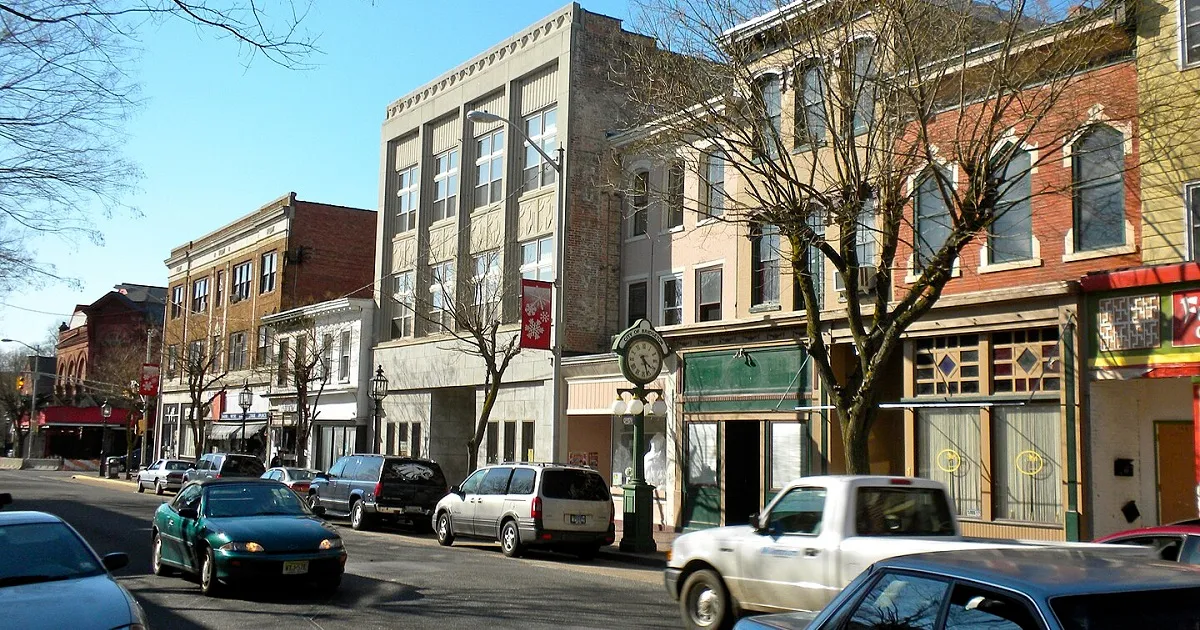New Jersey, the Garden State, offers a diverse landscape of coastal towns, bustling cities, and idyllic suburbs. While many areas boast excellent schools, vibrant communities, and a high quality of life, not every town is created equal. This article delves into five New Jersey municipalities that consistently rank low due to factors such as crime rates, poverty, lack of opportunity, and overall diminished quality of life.
Detailed Analysis of Each Location
1. Camden, New Jersey
- Crime and Safety: Camden continually grapples with alarmingly high crime rates, particularly violent crime. Statistics consistently place Camden among the most dangerous cities in both New Jersey and the entire United States. Source: PropertyClub: https://propertyclub.nyc/article/most-dangerous-cities-in-nj
- Poverty and Economic Decline: Decades of industrial decline have left Camden with a severely weakened economy. Poverty rates are significantly higher than the national average, impacting the quality of life for many residents. [Source: US Census Bureau] (https://www.census.gov/)
- Education: The Camden school system faces serious challenges, with low student performance and graduation rates. This limits opportunities for the city’s youth and contributes to a cycle of poverty. Source: New Jersey Department of Education: https://www.nj.gov/education/
2. Trenton, New Jersey
- Crime and Safety: Trenton, the state capital of New Jersey, also suffers from elevated crime rates, affecting residents’ sense of security. [Source: FBI Crime Statistics] (https://ucr.fbi.gov/)
- Poverty and Unemployment: Trenton has a high poverty rate along with higher-than-average unemployment. These factors create economic hardship for residents. [Source: US Census Bureau] (https://www.census.gov/)
- Economic Opportunity: Limited economic prospects and the decline of some industries make it challenging for many Trenton residents to find well-paying jobs with strong career potential.
3. Paterson, New Jersey
- Crime: Paterson’s crime rates, particularly property crime, are higher than state and national averages. This creates a less desirable living environment. . [Source: PropertyClub] (https://propertyclub.nyc/article/most-dangerous-cities-in-nj)
- Urban Decay and Blight: Paterson has areas of noticeable urban decay, characterized by abandoned buildings and undermaintained infrastructure that can negatively affect property values and the overall appeal of the city.
- Education: Many schools in Paterson face challenges, with some achieving lower test scores and graduation rates. This creates hurdles for students in acquiring the skills needed to break economic barriers. [Source: New Jersey Department of Education] (https://www.nj.gov/education/)
4. Atlantic City, New Jersey
- Crime and Safety: Although known for its casinos and boardwalk, Atlantic City struggles with crime rates above the national average. This can detract from residents’ sense of security. [Source: FBI Crime Statistics] (https://ucr.fbi.gov/)
- Economic Reliance on Casinos: Atlantic City’s economy excessively depends on the casino industry. This creates instability, as evidenced by the closure of several casinos in recent years, leading to job losses and economic hardship.
- Poverty: Atlantic City has a high poverty rate, significantly exceeding national benchmarks. Many residents face economic difficulties. [Source: US Census Bureau] (https://www.census.gov/)
5. Bridgeton, New Jersey
- Poverty and Unemployment: Bridgeton is plagued by concerning poverty and unemployment levels. These factors create economic hardship for many residents and limit opportunities for growth. [Source: US Census Bureau] (https://www.census.gov/)
- Crime: Bridgeton experiences higher crime rates than the national average, which negatively impacts the feeling of safety within the community. [Source: FBI Crime Statistics] (https://ucr.fbi.gov/)
- Limited Economic Opportunities: Bridgeton residents may find it harder to secure well-paying jobs with advancement potential due to the more limited range of industries and economic activity in the area.
Important Considerations and Notes
- Data Fluctuations: Crime rates, economic indicators, and other data points used to evaluate a city’s quality of life can change over time. It’s essential to look at the most recent data for the most accurate assessment.
- Neighborhood Variations: Every city has areas with both positives and negatives. Blanket statements about an entire city should be treated with some nuance, as there’s often variation between neighborhoods.
- Individual Perspectives: What makes a place “bad” to live in can be subjective. Factors like affordability, job opportunities, and personal preferences play significant roles in individual assessments.
- Potential for Improvement: These cities face undeniable challenges, but it’s important to remember that communities can evolve. Initiatives for revitalization, economic development, and crime reduction can create positive change over time.
Conclusion
While New Jersey offers many desirable places to live, it’s crucial to acknowledge the difficult realities faced by the cities outlined in this article. Understanding the factors contributing to lower quality of life can guide individuals in making informed housing decisions. It also sparks important conversations about how to address the challenges faced by these communities.
Remember: This article serves as a snapshot based on specific criteria. It’s always advisable to conduct thorough research that aligns with your individual priorities before deciding on where to live.



